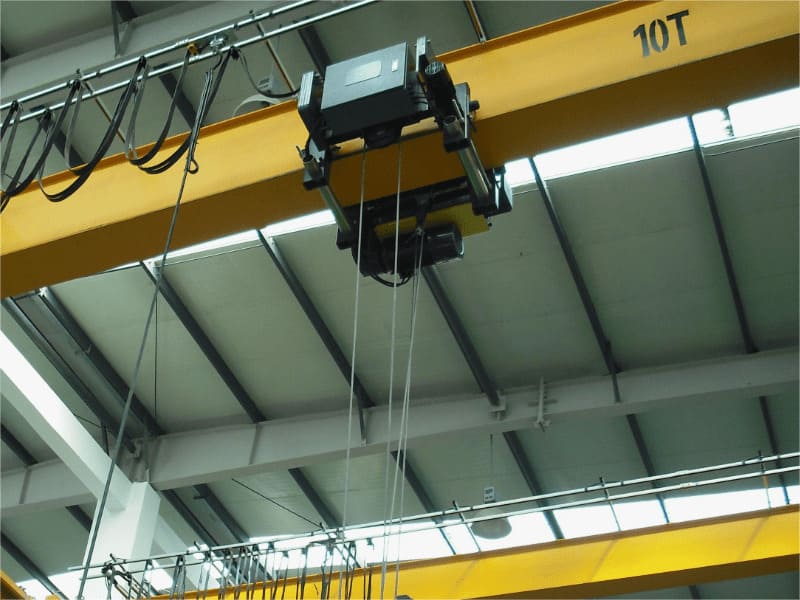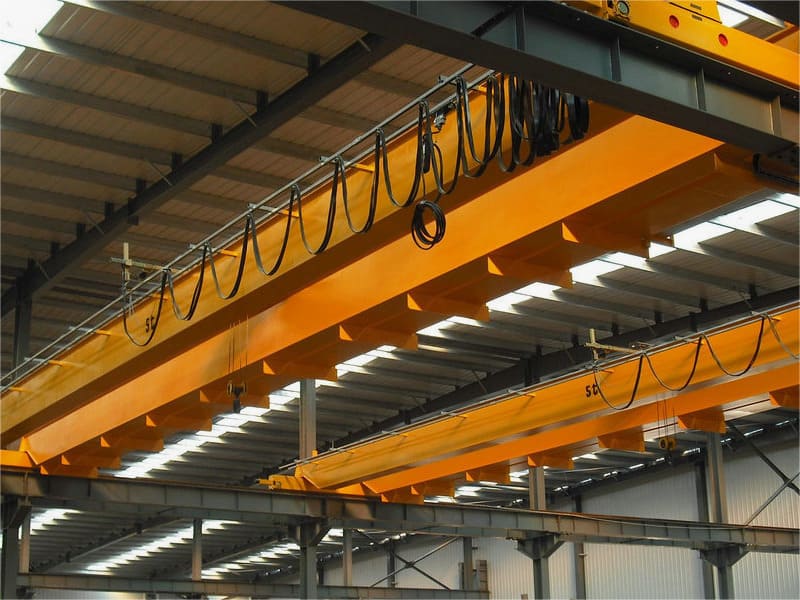Top-running bridge cranes have a fixed rail or track system installed on top of each runway beam, allowing end trucks to carry the bridge and crane along the top of the runway system. Top-running cranes can be configured as single-girder or double-girder bridge designs. Top running single girder cranes use underslung trolleys and hoists, while double-girder designs typically use top-running trolleys and hoists. These types of overhead cranes are supported by building structures or runway support columns and are ideal for moving extremely heavy loads.
Top-running overhead cranes are the ideal solution for industrial buildings with limited headroom. Running on rails mounted atop the runway beam, top-running cranes gain extra lifting height over what is possible with an underhung crane. Top running overhead cranes are typically larger than under running cranes, as they can be built to higher capacities and can accommodate wider spans. Top-running cranes typically are larger with greater lifting capacities, at 10 tons or more. They’re also easier to install and service.
Top-running systems require more frequent rail alignment inspections and more frequent rail alignment.Because the crane is supported on rails on top of the runway beam, there are no suspended load factors, making installation and future repairs or maintenance easier and less time-consuming than with an operating crane.
During its service life, the track or rail system on which a bridge moves may need to be checked for alignment or tracking issues more frequently than an operating crane. Fortunately, repairs and alignment checks are fairly easy to perform and require less downtime than an operating crane.
SEVENCRANE can help you determine the top running bridge crane systems for your operation—based on your facility specifications and the unique requirements of your business and processes. SEVENCRANE offers complete solutions—including equipment, inspections and maintenance, and training for operators and service personnel.









